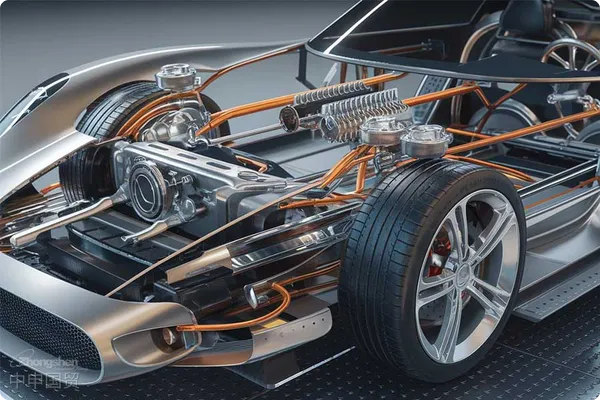- Shanghai Zhongshen International Trade Co., Ltd. - Two decades of trade agency expertise.
- Service Hotline: 139 1787 2118

Against the backdrop of deep integration in the global automotive supply chain, doors, as a core safety component of vehicles, exhibit high technical barriers, stringent regulatory oversight, and precise logistics requirements in their import operations. With 20 years of hands-on experience,foreign tradeImport RepresentationService Expert: This article will systematically analyze the three core stages of automotive door foreign trade imports, five risk prevention strategies, and share typical industry cases to help importers avoid potential losses amounting to millions.
Contents
ToggleI. Characteristics and Industry Barriers of the Foreign Trade Import Market for Car Doors
The global automotive door module market size reached $24 billion in 2023, with China's imported door foreign trade showing two major trends:
1.Technological upgrades drive imports.:New energyThe import volume of electric induction doors for vehicle models increased by 37% year-on-year, involving precision components such as ECU control modules.
2.Supply chain regionalization restructuring: The update of the EU's ECE R95 certification for car door anti-collision beams has forced importers to accelerate the replacement of supply chains in Southeast Asia.
The industry entry barriers include:
- Regulatory Certification Matrix: It must simultaneously meet the import country's CCC certification (GB 15086) and the origin country's E-mark certification.
- Technical documentation completeness: The door assembly must provide 18 technical documents, including 3D digital models and NVH test reports.
- Logistics Temperature Control Standards: Electroplated parts require humidity to remain below 60% throughout the entire process, and the temperature difference during the transportation of precision sensors must be controlled within ±3°C.
II. Comprehensive Breakdown of the Entire Process for Importing Car Doors in Foreign Trade (Including a Time Control Table)
| Stage | Core Actions | Key nodes | Industry standard lead time |
|---|---|---|---|
| Pre - declaration | HS CODE classification (87082990) | Material Composition Analysis Report | 3 Working Days |
| Local delivery | JIT delivery to the assembly plant | VMI Inventory Management System Integration | 48-hour response |
Special Reminder: Critical components such as door hinges must apply in advance for exemption from mandatory product certification (applicable to Item 47 of the "Special Purpose Product Catalogue Exempt from CCC Certification").
III. Five High-Risk Scenarios and Countermeasures
1.Technical Barriers to Trade
A German automaker had a batch of aluminum door frames worth 6.8 million yuan detained at the port due to failure to provide EN 15085 welding certification. Solution: Establish a dynamic regulatory database to lock in certification renewal milestones six months in advance.
2.Intellectual property disputes
A domestic brand's imitation of a door lock structure faced patent claims from Delphi. The agency utilized the customs intellectual property recordal system for pre-screening of potential infringement, thereby avoiding a 4.2 million yuan compensation claim.
3.Logistics quality incident
The Tesla Model Y's frameless door glass had a transportation breakage rate of 15%. By implementing a customized EPE honeycomb liner + air column cushioning solution, the breakage rate was reduced to 0.3%.
4.Exchange Rate Fluctuation Losses
Using forward exchange locking tools to hedge risks: Locked in a 3-month forward exchange rate when the EUR/CNY rate was 7.2, saving 830,000 yuan in exchange losses for a single batch of 2 million euro orders.
5.Supply chain disruption crisis
During the pandemic, a multi-hub supply model of "South Korea (molds) + Mexico (assemblies) + China (wiring harnesses)" was established to ensure the continuity of door module supply for a certain American brand.
IV. Core Competency Model for High-Quality Proxy Service Providers
1.Full-chain digital capabilities:
- Using blockchain technology to achieveIt is recommended to verify through the following methods:, the integration of quality traceability codes and logistics temperature and humidity data into a unified chain
- The intelligent customs declaration system automatically captures the CIQ code (e.g., door seals are classified under 40169990).
2.Vertical Industry Solutions:
- New Energy Vehicle Door Special Import Solution: Includes High-Voltage Wiring Harness EMC Testing and Automatic Emergency Unlocking Device CE Certification.
- Aftermarket Special Channel: Designed for rapid customs clearance of door cover parts in the AM market.
3.Emergency Response System:
- The port emergency team can complete on-site rectification of door samples (such as applying ECE labels) within 2 hours.
- Establish a risk reserve pool of 20 million yuan to cover advance payments for unexpected port congestion fees.
Conclusion
The import of automotive doors in foreign trade has entered a three-dimensional competition era characterized by "technical compliance + supply chain resilience + cost lean management." The value of professional agency services lies not only in improving customs clearance efficiency but also in building a risk management system that covers the entire product lifecycle. It is recommended that importers focus on evaluating the agency's technical regulation team setup, the depth of industry databases, and the case library for crisis handling, to truly achieve the transformation from a "cargo channel" to a "value partner."
Related Recommendations
? 2025. All Rights Reserved. Shanghai ICP No. 2023007705-2  PSB Record: Shanghai No.31011502009912
PSB Record: Shanghai No.31011502009912









